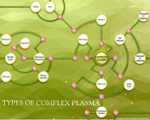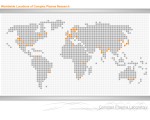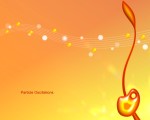 |
 |
 |
The Making of CPL Wallpapers and Posters
Have you ever wondered how we manage to create such artistic looking wallpapers and posters? Do you know what computer programs and imaging softwares do we use in generating all these images?
Each month, a new theme which is related to the field of complex plasma will be used as the basic storyboard for the creation of the wallpaper. This is because the wallpaper not only has to promote complex plasma on an international level, it also has to provide information on the scene of current researches in this field. For example, the september wallpaper explains the different types of complex plasma which are being studied; the october wallpaper shows the location of all the laboratory groups involved in complex plasma research around the world; and the november wallpaper promotes the study of particle dynamics using complex plasma.
Once the theme has been decided, a number of softwares are used in creating the wallpapers depending on its complexity. Some of the softwares we used include:
Maya Unlimited 4.0, 3Dmax Studio 5
- for creating complex 3D models and animations such as our crystal structures
and electric potentials,
Bryce 5 - for creating natural landscapes, oceans and skies
in 3D,
Maple 7 - for plotting well defined geometrical curves and
surfaces,
Kai's Powertools 6, KPT Effects 7 - for creating special
effects such as turbulence, fraxframe, fluid and lensflare, and
Ulead Photoimpact XL, Macromedia Fireworks MX, Corel Draw 10, Corel
Photopaint 10, Adobe Photoshop 6.0 - for compositing 3D and 2D images
together, drawing and coloring various pictures with different textures, and
introducing various digital effects during post production.
 |
|
|
Figure 2 - Above shows two
examples of the many techniques we used in creating
the different elements in the December 2003 wallpaper.
Different techniques were applied to the wallpapers to achieve a unique look for each month. Using different softwares, we were able to experiment with different drawing techniques. For example, we created the "International Floral Series" for June to August this year using Fireworks. And also the time changing wallpaper for March using Bryce.
|
|
Figure 3 - This pictorial explanation of
ion drag was achieved by combining
the use of Maple 7 and Photoimpact XL.
"A picture saves a thousand words" - which is the reason why we placed alot of effort in creating the images to help explain some of the abstract ideas in complex plasma. This is especially helpful for presenations in conferences as the amount of time required to explain certain topics can be greatly reduced.
For making posters, we also used few additional softwares in creating complex diagrams and organisational charts. They include Microsoft Powerpoint XP and Microsoft Visio XP.
|
|
Figure 4 - This poster
was achieved by first using Kai's Powertools 6, then Maya Unlimited 4,
followed by Corel Photopaint
10, and completed using Photoimpact XL
Figure 5 - A special version of the December 2003 wallpaper.
And to thank everyone who have been so supportive in our wallpaper download section. We have provided a special version of the December 2003 wallpaper for everyone to download.